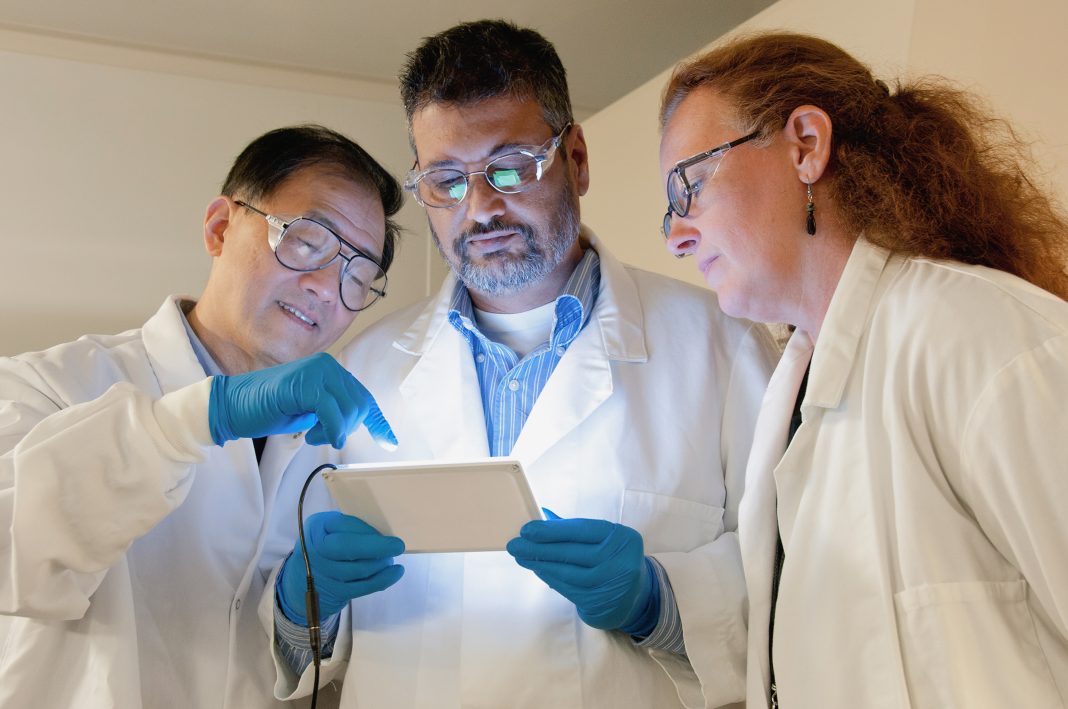Scientists at the Francis Crick Institute and Imperial College London have developed a new method for studying proteins released by specific cell types in complex environments, which they suggest could lead to the development of new tools to track diseases such as cancer. In tests, the team demonstrated application of the technique, which uses “click” chemistry and is known as bioorthogonal cell line-specific tagging of glycoproteins (BOCTAG), both in co-culture systems and in mouse models.
Research lead Ben Schumann, PhD, a group leader at the Crick and Imperial College London, and colleagues described the technology in a report in Nature Communications, titled, “Cell-specific bioorthogonal tagging of glycoproteins.”
Biomarkers are highly valuable tools that allow doctors to study biology and disease, for example, diagnosing a disease from a blood or tissue sample, predicting if a treatment will be effective in an individual, or evaluating how much of a drug is reaching diseased cells. But finding these biomarkers is challenging. To help diagnose disease, scientists need to identify proteins that are uniquely made by diseased cells but that are not released by healthy cells.
Cancer, the team wrote, is a disease that involves an interplay between host and tumor, and altered glycoprotein expression represents “an undisputed corollary of cancer development.” But while understanding these glycoprotein alterations is important, it is also hampered by limitations underlying cellular model systems, the team continued. “For instance, the intricate interactions between tumor and host cannot be adequately recapitulated in monoculture of tumor-derived cell lines. More complex co-culture models usually rely on sorting procedures for proteome analyses and rarely capture the details of protein glycosylation.”
“When you have a sample containing various cell lines, it is very difficult to identify the proteins that came from a specific line,” Schumann said. “Of course, in the laboratory, we can create experiments with only one type of cell, however, these conditions do not mirror what happens in the body where complex interactions between cells could affect their behavior and so the proteins they release.”
For their studies, the team developed a new method that identifies proteins released by a specific type of cell, even if the cells are in a complex environment with lots of other cell types. The approach centers on chemically tagging sugar molecules that are added to cells. While all cells absorb the sugar, the researchers genetically modified the cell type they wanted to study, so that only this type adds the sugar to its proteins. When the cells make these proteins, they remain marked with the chemical tag, giving scientists a way to identify them.
The method uses bioorthogonal or “click” chemistry, which was awarded this year’s Nobel Prize in Chemistry. One of the prize recipients, Carbolyn Bertozzi, PhD, at Stanford University, is a co-author of the newly reported study. The chemical tag is selected so that it “clicks” with another molecule that helps the researchers isolate the desired proteins or add a fluorescent tag to them.
The researchers showed their resulting BOCTAG method worked in cell cultures with multiple cell lines and also in mice, where the researchers successfully tagged proteins from particular cancer cells. “We demonstrate application in co-culture and mouse models, allowing for profiling of the glycoproteome as an important modulator of cellular function,” they wrote. “In this study, we looked at proteins made by cancer cells, but our method could also be used in other fields including immunology or the study of infectious disease,” noted first author Anna Cioce, PhD, a postdoctoral training fellow at the Crick. “It could also be used to better understand disease biology, including how tumor cells change as a result of complex interactions in the body. Added Schumann, “The next step for our team will be to continue developing this method and learning more about how cells produce different proteins depending on their environment.”
The researchers commented that their approach is complementary to other techniques, including the use of unnatural amino acids, proximity biotinylation, and ligand-targeting delivery approaches. They concluded, “BOCTAG allows for programmable glycoprotein tagging with remarkable signal-to-noise ratio, and is an enabling technology that will transform our understanding of tumor-host interactions, particularly in the context of protein glycosylation.”


